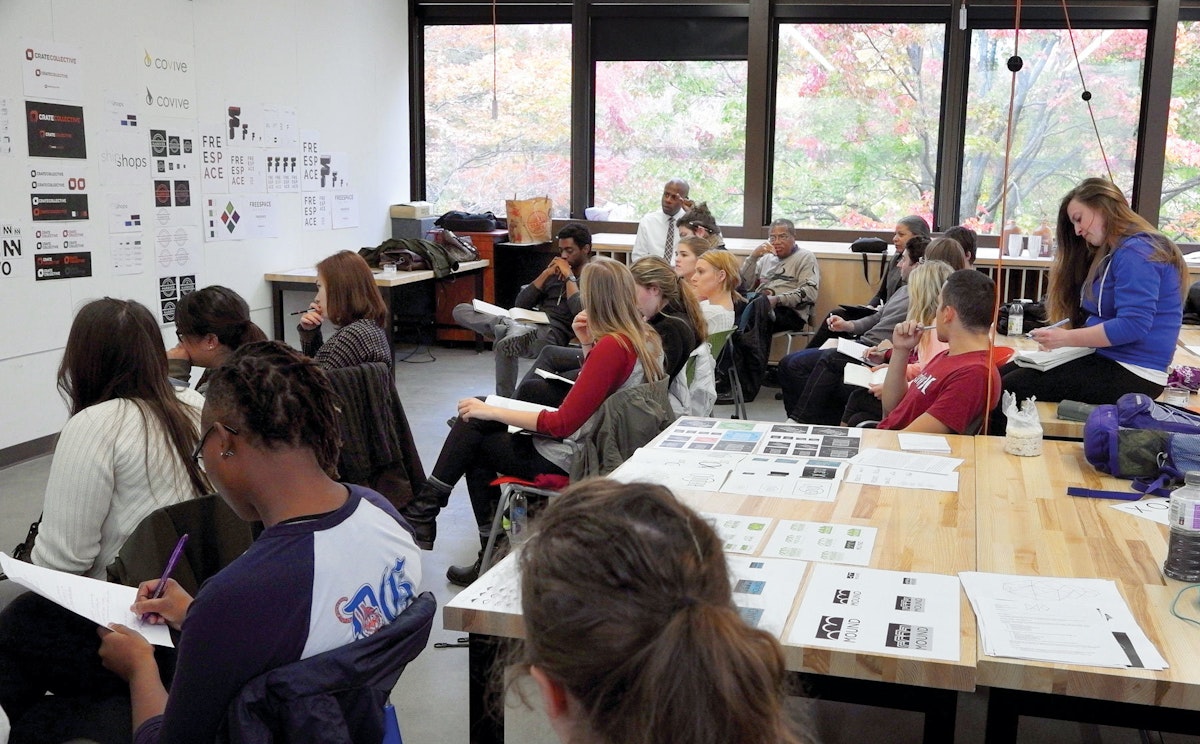Identity Politics in Art & Design
How can art and design not only help reveal various cultural biases but also help us move past them?
As the University of Michigan enters year two of its Diversity, Equity & Inclusion (DE&I) Strategic Plan, Stamps Professor Marianetta Porter and Associate Professor Irina Aristarkhova will put these and other tough questions to students in a new upper level undergraduate course tentatively titled "Identity Politics in Art & Design."
The co-creators say the class helps fill two needs voiced by Stamps students: first, for more outlets to engage with current affairs and, second, more opportunities to receive feedback on work about personal identity.
The course also makes good on a faculty-led Stamps curriculum initiative focused on inclusivity in the classroom and is backed by one of eight new grants to support inclusive teaching efforts — two for creating new courses, and six for revising existing ones.
"There's a difference between inclusive teaching in an Engineering or an LSA classroom and inclusive teaching in the studio," Aristarkhova says. "We rarely discuss what it means, inclusive teaching in a studio. We hope to contribute to a national conversation on inclusive studio pedagogy."
The professors bring years of experience working with topics like identity politics to the course. As a professor of Art History and Women's studies, Aristarkhova has written extensively on feminist theory and aesthetics, while professor Porter's scholarly work and visual art is based in African American history, culture, and representation as it plays out in modern life.
Their approach to the course, which includes a weekly three-hour seminar and another three-hour studio session, is also a new one.
"We wanted to try a structure where there was a real explicit and direct relationship between what students are learning and studying conceptually and theoretically and also what they were doing hands-on in the studio — the ideas and the making," Porter says. "It's really an opportunity for those things to solidly merge with one another. I don't think that's happened before."
Through research, discussion, and studio work, students will cover four main units over the semester: politics and the notion of power, psychology of visual language, identity and representation, and activism and responsibility.
Assignments could include writing manifestos and responding to prompts, including political slogans written on hats and T-shirts (think, "Make America Great Again" or "Black Lives Matter").

For a lesson on form, meaning, and content, students will choose an object from their own culture and research its history, how it's been used, and why it means what it does. Then they'll use that research to translate their object in the studio for a different take on it.
"Take a hammer for example," Porter says. "If I made that hammer out of cloth, I've changed its meaning, its function."
Porter cites Kara Walker's A Subtlety, or the Marvelous Sugar Baby as a case study in how form and materials can impact public reaction to a piece. The African American artist's 2014 installation at the former Domino Sugar plant in Brooklyn, N.Y., features, as the New York Times described it, "an enormous sugarcoated woman-sphinx with undeniably black features and wearing only an Aunt Jemima kerchief and earrings," before raving, "it is beautiful, brazen and disturbing, and above all a densely layered statement that both indicts and pays tribute."
Highlighting minority or marginalized artists, like Walker, is also an important aspect of the course. Porter says she'll bring a wide range of references — "artists of color, queer artists, artists with disabilities" — to help students see that there are many voices, not one "monolithic approach that represents what an artist is."
Appreciating those different perspectives also plays to the course's key goal of helping students get outside of their own perceptions en route to becoming professionals.
In the end, the instructors hope students will better understand and talk about their implicit biases and then move past them, when it comes to art and design. They also hope to help connect them with the larger social and political conversations going on around them.
"In art, oftentimes there's this notion that it's just self expression," Porter says. "Whatever you feel, you put it out on the canvas or carve it into stone. Certainly these issues emanate from our own personal experience, but they're bigger than that."
And the job is getting bigger, too. As the world gets more and more visual, Porter says artists and designers will actively shape how we see it.
"If we're not challenging our students to think more deeply about these complex issues of race, class or gender, they can't rise to the task of really positively informing our world," she says. "I'm hoping the class will have an extension way beyond their graduation, that they will be sensitized to at least stop and think about someone else's point of view, whether they agree with it or not, to really think about the work they put out there and how that informs us about the world around us."
Story by Eric Gallippo.